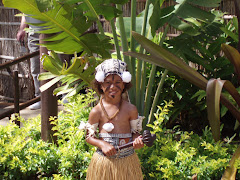The ever assuring voice of the Great Council of Chiefs has helped shape Fiji into what it is today. Without this august body we would not have modernisation in its present form, nor would we have adopted the Western concepts of governance and democracy.
In the absence of their voice through their current stand-off with the military, we take a look at the GCCs history and the consequences that shaped this institution up until recent times, in this three-part series.
SINCE that first shot was fired on May 14, 1987 in Fijis unknowing parliament, the fluidity of Fijian politics has never recovered from the so called coup culture.
It has become the main catalyst to legitimise the overthrow of any tyranny of democracy in Fijian politics. Caught in this vice-like grip is the Great Council of Chiefs, the last bastion of the Fijian race. For many years Fiji has looked up to the Great Council of Chiefs for answers to a wide range of its problems in its darkest hours. And many times they have bailed out a nation on the brink of collapse with their wisdom and aura. That is why it has been revered and tagged with the label, august institution. However, the 2006 coup and the leadership problems that continue to plague Fiji, have given fuel to the growing number of critics who are losing confidence in this institution.
The continuous silence on the part of the chiefs has also fuelled rumours that the GCC may have been too politicised, and, that what the public now hears is only the voice of the institution called the GCC making decisions but without the full mandate of all chiefs. This school of thought is also bold enough to claim that the GCCs aura and manna have been lost.
Interim Prime Minister Frank Bainimaramas public swipe at the GCC, though considered harsh by many, has also given fuel to that same school of thought.
The erosion of chiefly rule, stemming from the 1987 coup, was sensed and opposed strongly by the late Josevata Kamikamica.
He said the chiefly body should be apoliticial, with reference to the Soqosoqo ni Vakavulewa ni Taukei Party the first political party to receive the backing of the chiefly body.
Mr Bainimaramas slating the GCC was blasphemy in the eyes of any Fijian. But could it be that he knew certain truths within the roots of all things chiefly that gave him the ammunition to conduct the so called clean up campaign, starting with the GCC?
In the absence of the chiefly voice maybe it is an opportune time to review the roles of this institution, its origins and what its initial functions were.
To do this we have to go back into history to fully understand the initial establishment and purpose of the GCC. The Great Council of Chiefs was a brainchild of William Pritchard, the British Consulate who initiated the first ever general meeting of chiefs in Levuka on December 14, 1859 to pave the way for the cessation process of Fiji to the British Crown. Like the 1997 Constitution, the old Matanitu could understand what its true purpose and benefits were.
Their ignorance of understanding the issues was interpreted by the Colonialists as a major threat to their chosen leading chiefs led by Ratu Seru Cakobau the then Vunivalu of what was to be regarded by many, as the leading military and naval power in Fiji, supported by white historians. He was under threat from the Americans to pay up the debts for the burning of the US Counsels residence in Nukulau on July 4, 1846, which plagued Cakobau for the next 20 years. Pressed from all corners to avoid the same fate that Veidovi of Rewa in 1840 faced for his crimes against visiting American ships when he was shipped out of Fiji in chains by Commodore Wilkes to America to answer for his crimes, Cakobau needed a way out. At the same time, Cakobau, who became fascinated by the Hawaiian monarchial system through his secretary Samuel A St.John, assumed the title Tui Viti. He was sending out the message that he held absolute power throughout the divided yet pocket and strongly entrenched matanitu that made up Fiji.
Each matanitu operated under a sophisticated and civilised system of its own chiefdoms your chief did not recognise the other, hence the adage "manu dui tagi" (you only rule in your own land) common to the chiefs of Kadavu. Even more true to this debate were the Colo states that now come under Naitasiri.
Each small state had their own chief and there was no recognised paramount chief in their eyes.
The opportunity to consolidate his position through the first of many coups (with the overthrow of the principle chief of Bau the Roko Tui Bau) during his own lifetime and his continued skirmishes, armoured with muskets and fierce warriors was a war itself against the ancient Fijian chiefly hierarchy. A hierarchy that had stood the test of time over 15 generations before his time.
In the eyes of the old matanitu or old guard if you may, the uprising Bau matanitu was a junior state yet it had the gall to challenge the old ways.
To achieve his goals, Cakobau subjected the seniority of many other matanitu and gave prominence to the lesser matanitu that gave him their support forming the provinces to be their leader. Many of these old Kingdoms were at war with the emerging power for a long time including Roko Tui Dreketi of Rewa, Ratu mai Verata, Takala-I-Gau of Lomaiviti, Tui Cakau of Taveuni, Gonesau of Ra and Lau under the Tongan prince Enele Maafu.
(Next we look at the assessment of the British advance party to check Ratu Serus claims as Tui Viti)
Subscribe to:
Post Comments (Atom)


No comments:
Post a Comment